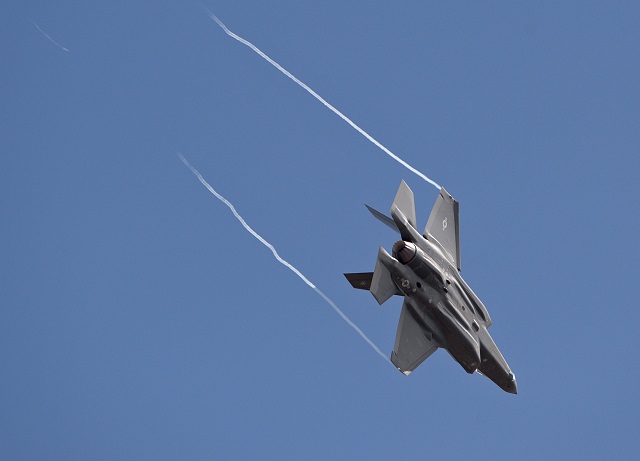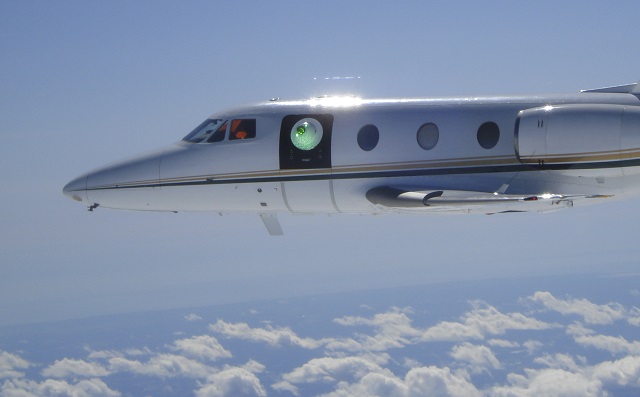Lockheed Martin’s F-35 has not yet seen combat, but already the defence manufacturer is exploring “concepts” for installing and employing a high-power fibre laser weapon on the new-generation combat jet for shooting down missiles and other airborne threats.
The company believes it finally has the right technology to produce modular and scalable fibre laser weapons for trucks, ships and aircraft, and a high-power, 60kW example will enter production for the US Army later this month.
The F-35 has been in development since 2001 and only recently was declared fit for combat with the US Marine Corps. However, Lockheed’s Rob Afzal says company engineers are already thinking about how a laser weapon system could fit onto the supersonic stealth fighter and its usefulness in combat.
“Absolutely, we’re looking at concepts for the integration of a laser weapon onto the F-35,” the Lockheed senior fellow for laser and sensor systems said at a media briefing 5 October.
“We’re also looking at the utility and doing models and calculations so you would understand the utility of a leaser weapon system in the F-35.”

The F-35 is still in development and will enter service with the US Air Force in August 2016. Additional capabilities, such as a laser weapon module, could be introduced in future block upgrades in the 2020s and 2030s.
US Air Force
Afzal’s comments come amid a revolution in the combining and directing of electric lasers to essentially burn rockets, missiles and unmanned aircraft out of the sky.
The US military has unlocked millions of dollars for directed energy research and development, as has Germany, Russia and China.
In particular, the US Air Force is pursing laser weapon systems for installation on supersonic fighter jets as well as the AC-130J Ghostrider gunship being built for US special forces.
Once introduced, the F-35 will remain in service for 30 to 40 years, and is a likely candidate for a fighter-based airborne laser module.
Lockheed says it would offer an airborne derivative of the system it is developing for the army, which uses spectral beam combining to channel energy from a stack of individual fibre laser modules into a “single, high-power, monolithic beam”.
The company claims laser efficiency rates as high as 40%, and says its modular design is scalable to higher power outputs with significantly more redundancy and resistance to battle damage.

Lockheed Martin
Combined with the Aero-adaptive Aero-optic Beam Control (ABC) turret the company is developing in partnership with the US Defense Advanced Research Projects Agency (DARPA) and Air Force Research Laboratory – Lockheed says a functional airborne laser weapon could be deployed by the end of the decade.
“We’re certainly talking to the air force about their plans and roadmap for developing laser weapons for F-35 and other platforms,” says Afzal. “We would want to do that in partnership with the air force, both with the turret and platform.”
The company is taking a number of approaches to aircraft protection, and is also pursuing a miniature self-defense munition through a project called “KICM”.
Lockheed’s first 60kW laser will be delivered to the army “late next year,” and in the meantime the company will begin army-sponsored trials of its ground-based, 30kW high-energy laser testbed called ATHENA at the White Sands Missile Range in New Mexico later this year.

General Atomics Aeronautical Systems hopes to eventually integrate its 150kW High Energy Liquid Laser Area Defense System (HELLADS) laser weapon system with the "Predator C" Avenger UAV, creating the "HEL Avenger".
GA-ASI
Source: FlightGlobal.com
















